Tibet
19th - 20th century
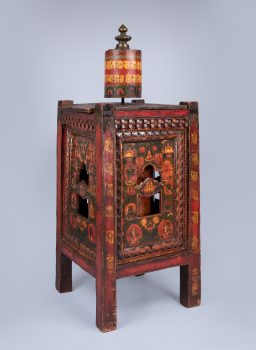

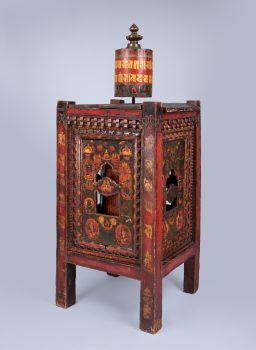

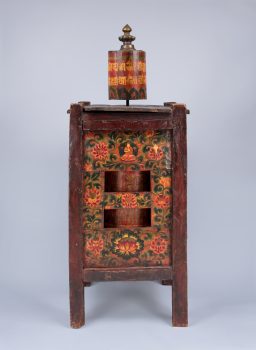

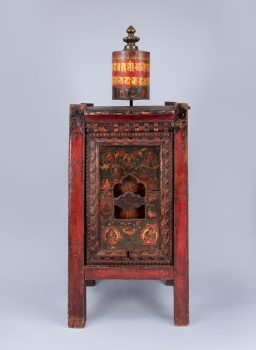
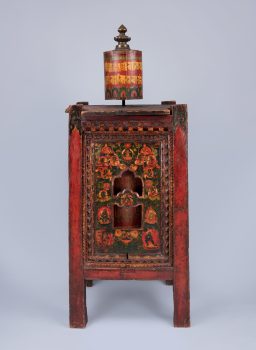
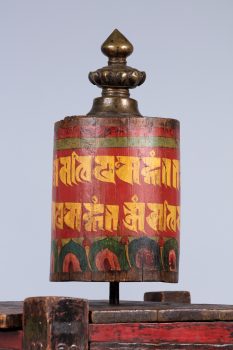
Tibet
19th - 20th century









In Tibetan Buddhist culture, those who are unable to read are instructed to spin a “wheel” filled with thousands of inscribed mantras, or mani, written on paper tightly wrapped around a central pole inside a cylinder that encases them. It is believed that turning the wheel is the same as reciting the prayers and mantras, leading to the accumulation of merit and wisdom while purifying negative karma for a practitioner; it also releases these mantras into the world, benefitting countless beings. Believed to go back to the famous Indian master Nagarjuna, this common practice is usually accompanied by vocal recitations of mantras and often combined with circumambulation around a sacred site or temple. The wheels are spun clockwise so the mantras inside can be read correctly, from left to right. This stationery prayer wheel would have been placed outside of a temple or shrine so visitors could turn the wheel on their way in and out of the temple and while circumambulating it. The rectangular panels that house the wheel are painted in the traditional Central Tibetan style and display teachers and deities of the Sakya Tibetan Buddhist tradition. The lotus petal cutouts on each panel serve as windows into the large decorated wooden cylinder of the prayer wheel inside. A smaller prayer wheel, capped by a bronze finial and threaded onto a long metal spindle on top, was probably a later addition. The mantra of the deity of compassion Avalokiteshvara, Om Mani Padme Hum, decorates the posts of the structure in ornamental Lantsa script.
In Buddhism merit is accumulated through engaging in positive actions that lead to positive results, such as better rebirths. Buddhists gain merit by making offerings, donating to those in need, reciting mantras, and other good deeds.
The cultivation of a strong aspiration to help sentient beings overcome suffering. In Buddhist Mahayana teaching, compassion is the seed for attaining full enlightenment.
Today, Tibetans primarily inhabit the Tibetan Plateau, situated between the Himalayan mountain range and the Indian subcontinent to the west, Chinese cultural regions to the east, and Mongolian cultural regions to the northeast. During the 7th to 9th century, Tibetan rulers expanded their empire across Central Asia, and established Buddhism as the state religion.
Get the latest news and stories from the Rubin, plus occasional information on how to support our work.